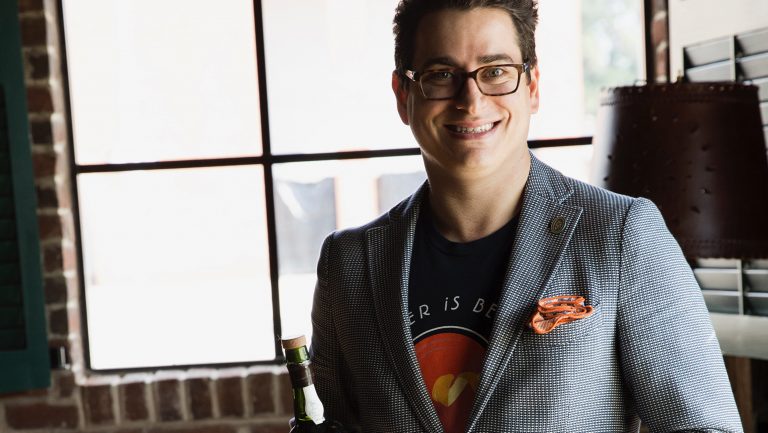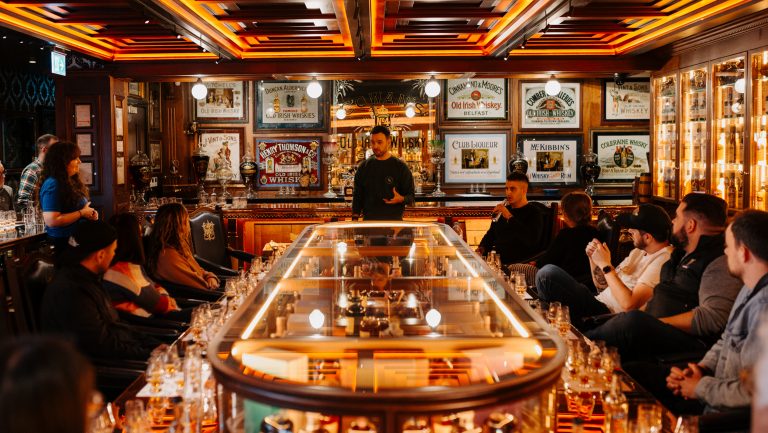After the chef, a sommelier fulfills one of the most important roles in a restaurant. Yet many restaurants consider sommeliers to be unnecessary or expendable.
Sommeliers were typically the first to be cut from a shift pre-pandemic, and in more recent months, they have been the first furloughed and last rehired. Operators believe that because sommeliers tend to earn higher salaries than other employees, cutting them from payroll will improve profit by reducing labor costs. While this seems intuitive, the opposite is true: Capable sommeliers improve the financial position of a restaurant even if they don’t touch every table. This misconception stems from a misunderstanding of a sommelier’s true value.
Not only are sommeliers some of the most experienced hospitality workers on the floor, they are also hyper-specialized in maximizing revenue in the category with the highest profit potential. This has never been more important than now: Restaurants are simply not equipped to sustainably operate at 25 or 50 percent capacity, as most states currently mandate, so every dollar counts.

Don’t miss the latest drinks industry news and insights. Sign up for our award-winning newsletters and get insider intel, resources, and trends delivered to your inbox every week.
Eliminating the sommelier role can decimate a restaurant’s gross profit potential since highly skilled sommeliers pay back their labor cost 10- to 100-fold on every shift. “We make you money in ways you don’t even know,” says Andy Myers, MS, the wine director of José Andrés’ ThinkFoodGroup.
Somms Run the Restaurant’s Most Profitable Business Unit
As experienced hospitality professionals who have worked their way up the front-of-house (FOH) chain, sommeliers can—and often do—perform every front of house job while on the floor. They help seat guests, run food, reset tables, and, of course, sell wine. While all restaurant positions are important, this multifaceted experience adds to a sommelier’s value as part of the FOH team.
Yet a sommelier’s true contribution is far more significant than mere task versatility. Restaurants must understand that behind the wine-geekery, the tastings, the rote memorization of vineyards and laws, sommeliers impact the highest gross revenue and highest gross profit items in a restaurant. Their ability to do so comfortably and consistently is what can keep a restaurant financially afloat. In essence, sommeliers are uniquely equipped to maximize revenue and profit.
A typical product mix split is about 60 to 70 percent food sales and 40 to 30 percent beverage sales. However, food sales come with a much higher cost to the operation. Back-of-house (BOH) labor is required to prepare food, from receiving and checking ingredients to prepping, cooking, and plating the dish.
The cost of the ingredients themselves adds up as well, and raw ingredient yields can vary dramatically during prep. Restaurants must also account for waste and spoilage, which can be especially high when sales lag, and loss from staff consumption. After factoring in these variables, net profit from food items is generally under 50 percent.
Conversely, wine comes with very little cost outside the acquisition price of the bottle. Wine bottles have no prep costs, few yield variations, and minimal labor requirements. No special preparation is required, and wine is nowhere near as perishable as food. The result is high gross profit percentage and dollars.
The average wine bottle is priced at 250 to 350 percent of cost—even more for wines by the glass. The result is 60 to 80 percent gross profit on every bottle sold. Furthermore, wine is a high gross revenue product, often starting at $40 per bottle—the same price as an expensive entrée—and stretching to thousands of dollars per bottle. Having a specialist on staff to maximize sales of these high-grossing products is therefore a smart investment that results in more dollars in the bank.
“Apart from putting money in your bank, we get deals, allocations, and maintain relationships. This is the shadow economy of the sommelier.” —Andy Myers, MS, wine director of José Andrés’ ThinkFoodGroup.
It is therefore surprising that more operators do not understand the true value of sommeliers. Compare the wine department to the pastry department, for example. Most restaurants have a pastry program, which could include an executive pastry chef and sous-chef, along with hourly employees. At best, pastry provides 5 to 10 percent of a restaurant’s gross revenue, yet costs are extremely high: Ingredients are expensive, prep is time-consuming, and employees can’t resist snacking on sweets.
Desserts are also the most common item for a restaurant to comp, whether for a special occasion, a VIP, or to recover from a service issue. Therefore, the true return on a pastry department is generally under three percent gross profit for some of the least expensive menu items. Despite all of this, restaurants are far more willing to budget for labor in this department than they are to the wine team.

Their Expertise Creates New Revenue Streams
A wine program’s profit potential absolutely justifies devoting a sommelier or wine team to that department. Make no mistake: There is a significant difference between a restaurant that sells beverages, and a restaurant with a properly run beverage program.
Sommeliers create extra revenue for restaurants in countless ways, whether they upsell a guest from a glass to a bottle or consistently elevate the average bottle sale price by 10 to 20 percent. The sheer price range of bottles for a robust wine program—hundreds or thousands of dollars, compared to the entrée menu, where the range might be $10 to $30—also means that the sommelier has a much larger potential range of sales impact. Though the average guest is not likely to order the $1,000 bottle of grand cru Burgundy, with the guidance of a sommelier, the sky’s the limit.

How to Build a Financially Successful Drinks Program
Panelists at SommCon in Washington, D.C., share their tips for building a balanced beverage concept—and maximizing profitability
A sommelier’s potential to boost revenue and profit doesn’t stop at the sale, though; the application of specialized wine knowledge and creative strategy to to-go sales, for instance, has been a lifeline for some restaurants during the pandemic.
“The increase in to-go revenue with a well-curated selection by a sommelier gives you the opportunity to generate revenue without incurring the cost of extra labor,” says Myers. Many of ThinkFoodGroup’s sommeliers have created wine three-packs, which guests often purchase as an add-on to food sales. Just one of these three-packs generates the same amount of revenue that a dine-in two-top did pre-pandemic.
“We made that revenue without having to pay for the server, busser, host, or cooks,” adds Myers. “If you don’t have a professional sommelier, you’ll have a hard time putting together packs that are compelling.”
Sommeliers are also uniquely able to recognize and take advantage of deals, discounts, and close-outs from distributors. Because they are also in desperate need of cash flow, inventory liquidations and deep discounts are occurring regularly.
Sommeliers not only possess the skills and experience to identify smart deals, but they also have the strong relationships required to get access to these deals. And when restaurants start restoring depleted inventory, sommeliers will be the ones with access to the rare and allocated, high-margin wines. “Apart from putting money in your bank, we get deals, allocations, and maintain relationships,” says Myers. “This is the shadow economy of the sommelier.”
As the wine industry struggles to step out of the shadows of 2020, it is vital for restaurants to have sommeliers leading them into the light.

Dispatch
Sign up for our award-winning newsletter
Don’t miss the latest drinks industry news and insights—delivered to your inbox every week.
Erik Segelbaum is an Advanced Sommelier and the founder of SOMLYAY, a wine consulting firm.







